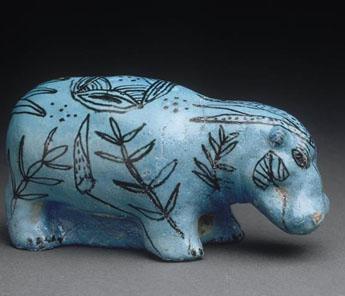Votre panier est vide
Besoin d'inspiration ?
Rendez-vous dans le programme en ligne du GrandPalais
Article -

Le tour du potier, inventé au IVe millénaire avant J.-C., se répand durant l’Antiquité. Les parois des vases sont plus régulières, plus fines et plus lisses. Les céramiques sont plus élégantes.

The potter’s wheel, invented in the 4th millennium BC, became widespread throughout Antiquity. The walls of vases become more regular, finer and smoother. Ceramics are more elegant. Middle Eastern potters, in particular Greeks and Etruscans, developed numerous forms: the krater, amphora, cup, aryballos, pyxis, oenochoe, etc. Their walls are richly decorated. The Egyptians produced faience with translucent turquoise blue glaze. The Chinese were already the great masters of the art of ceramics. They modelled, sculpted it and transformed it into an army of soldiers guarding the Emperor Qin Shi Huangdi in his tumulus, his final resting place. Under the Han Dynasty, small statuettes called Mingqi were placed in tombs. The first ceramics made from kaolin (clay used for porcelain) appeared. They were enamelled in blue or green.


Votre panier est vide
Besoin d'inspiration ?
Rendez-vous dans le programme en ligne du GrandPalais
See content : 'Les métamorphoses du Grand Palais': a France 5 and france.tv documentary to watch again!

Article -
The Grand Palais is completing the biggest renovation project in its history. For the past two years, director Stefan Cornic has been tracking this metamorphosis with his camera, giving an overview of the multiple events that have taken place in the building since it was inaugurated in 1900. A documentary to watch again and again on France 5 and france.tv!
See content : From Paris 1900 to Paris 2024: the Grand Palais and its Nave, an architectural jewel restored right on time to meet sportsmen and women!

Article -
A regular venue for artistic and cultural events for over a century, the Grand Palais is reopening its majestic restored Nave for the Paris 2024 Olympic and Paralympic Games to become the place for fencing and taekwondo events! And don't forget: this is...
See content : Meanwhile, on the building site, the Grand Palais is back in full colour

Article -
A monument of stone, glass and metal, the Grand Palais blends into the urban landscape. However, on closer inspection, it is in fact bursting with colour, and one of the challenges of the restoration work currently underway is to restore all its chromatic...